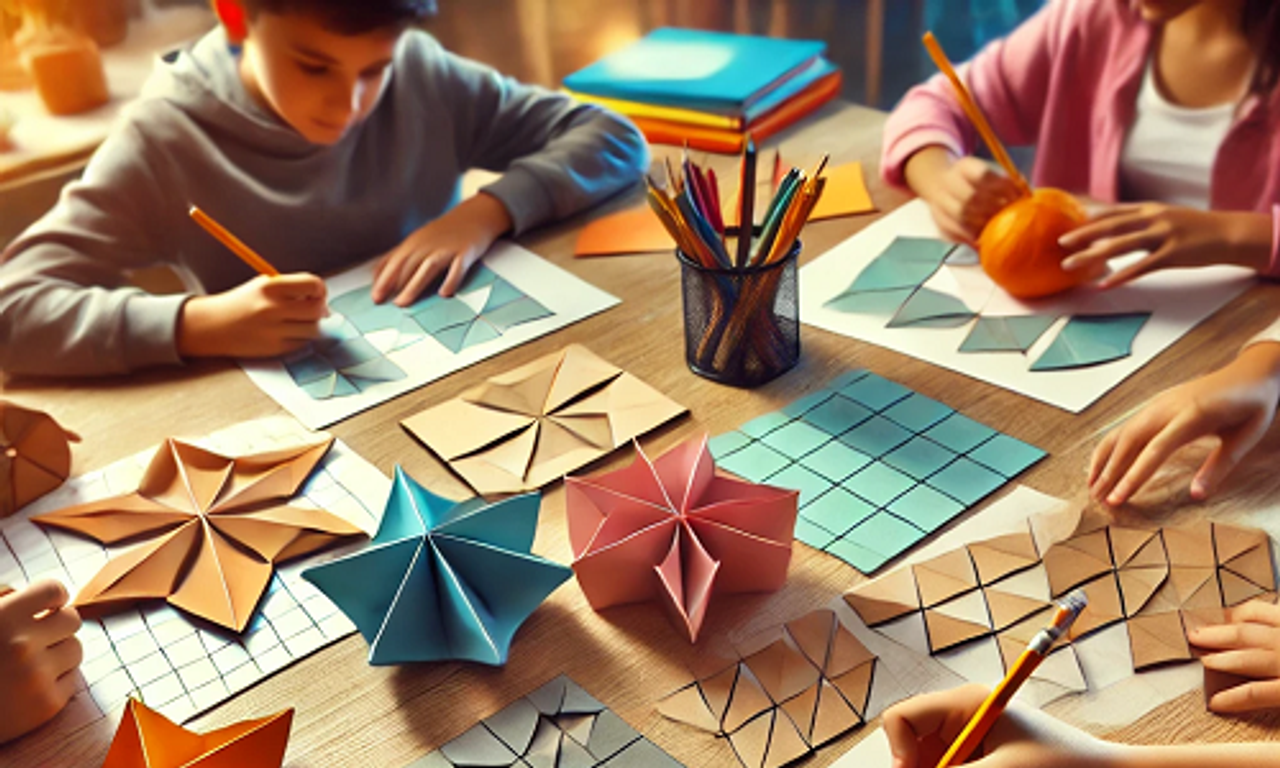Unlocking the Power of Patty Paper in the Math Classroom: A Guide for Educators
21st Aug 2024
Patty paper, those small, waxy squares typically used to separate burger patties, can be an unexpectedly powerful tool in the math classroom. These inexpensive sheets are perfect for engaging students in hands-on activities that make abstract mathematical concepts more tangible. This guide will explore innovative ways to incorporate patty paper into your math lessons, enhancing student understanding and participation.
1. Exploring Geometric Transformations
Patty paper is ideal for visualizing geometric transformations such as translations, rotations, and reflections. By tracing shapes onto patty paper, students can physically manipulate them to explore these concepts:
- Translations: Have students slide the patty paper across a coordinate plane to observe how shapes move horizontally, vertically, or diagonally without rotating or flipping.
- Rotations: Students can rotate the patty paper around a fixed point to see how a shape's orientation changes, reinforcing their understanding of rotational symmetry.
- Reflections: By folding the patty paper along a line of symmetry, students can directly observe how shapes are reflected, helping them grasp the concept of mirror images.
2. Investigating Congruence and Similarity
Patty paper is an excellent tool for teaching congruence and similarity, as it allows students to overlay shapes for comparison:
- Congruence: Students can trace one shape onto patty paper and overlay it onto another shape. If the shapes align perfectly, they are congruent, helping students understand this key geometric principle.
- Similarity: To explore similar figures, students can resize shapes on patty paper or use proportional scaling to see how shapes can be the same form but different sizes, aiding their comprehension of proportionality and scale.
3. Understanding Angle Relationships
Angle relationships can be abstract, but patty paper makes them accessible and interactive:
- Angle Bisectors: Students can fold patty paper to find the angle bisector, visually dividing an angle into two equal parts. This activity reinforces the concept of bisectors and symmetry.
- Complementary and Supplementary Angles: By combining angles on patty paper, students can explore how complementary angles add up to 90° and supplementary angles sum to 180°, making these concepts more concrete.
4. Exploring Parallel Lines and Transversals
Studying parallel lines and transversals becomes more engaging with patty paper:
- Corresponding Angles: Students can trace angles formed by a transversal crossing parallel lines and then slide the patty paper along the lines to see how corresponding angles are congruent.
- Alternate Interior Angles: Similarly, patty paper helps students investigate alternate interior angles, showing that they are equal when a transversal crosses parallel lines.
5. Creating and Analyzing Tessellations
Tessellations, patterns of shapes that fit together without gaps or overlaps, can be both fun and educational with patty paper:
- Designing Tessellations: Students can trace a shape onto patty paper and repeat it across a larger surface to create tessellations, exploring patterns and symmetry in a hands-on way.
- Analyzing Tessellations: By overlaying patty paper on existing tessellations, students can analyze the symmetry and structure within the patterns, deepening their understanding of geometric principles.
6. Constructing Perpendicular Bisectors
Constructing perpendicular bisectors is a foundational skill in geometry, and patty paper makes it easier for students to grasp:
- Constructing Bisectors: Students can fold patty paper along a line segment to find its midpoint, then draw a perpendicular line through this point. This exercise reinforces the concept of perpendicularity and bisectors.
7. Algebraic Exploration with Patty Paper
Patty paper isn’t just for geometry—it can also be a valuable tool in algebra:
- Graphing Lines: Students can trace different lines on patty paper and compare their slopes. This visual comparison helps students understand the concept of slope and the steepness of lines.
- Solving Systems of Equations: By graphing two linear equations on patty paper and overlaying them, students can easily find the point of intersection, representing the solution to the system.
8. Fraction Manipulation
Fractions can be a challenging concept, but patty paper provides a tactile way to explore them:
- Fraction Division: Students can fold patty paper to represent different fractions, then combine or divide these pieces to explore fraction operations like addition, subtraction, and multiplication.
Conclusion
Incorporating patty paper into your math classroom can turn abstract concepts into hands-on learning experiences that resonate with students. Whether you’re exploring geometric transformations or algebraic equations, patty paper offers a versatile, cost-effective way to make math more interactive and understandable. By integrating this simple tool into your lessons, you can foster deeper understanding and greater student engagement.
So next time you're planning your math lessons, consider adding patty paper to your toolkit—your students will thank you for it!
PURCHASE YOUR PATTY PAPER HERE
OTHER RESOURCES:

